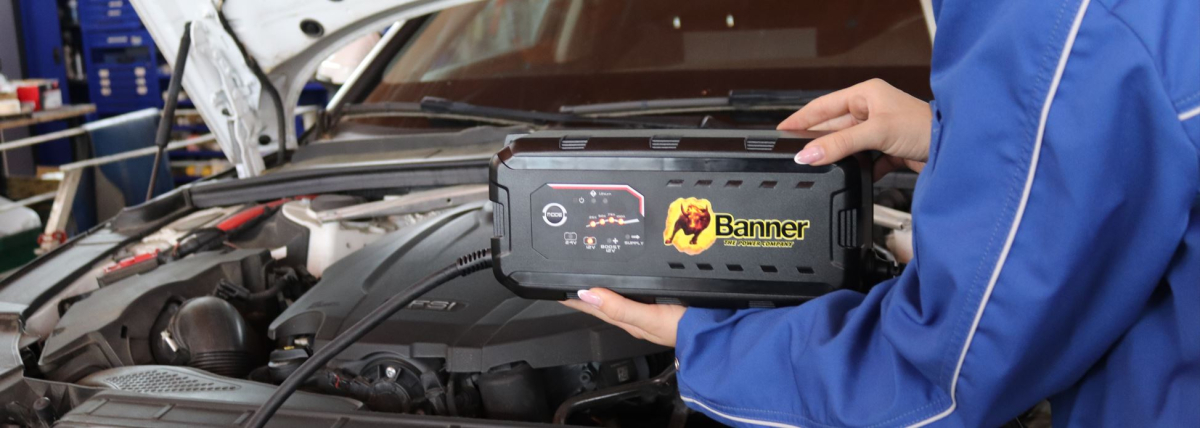TYRE CHANGE TIME = BATTERY CHARGING TIME
PRO TIPS NOT ONLY FOR SPRING AND LATE AUTUMN
Charge your car battery correctly - simple tips for MEGA starting power and a long service life!
It is best to always combine external recharging with a tyre change.
Not only short journeys are a real challenge for the battery, but also stop-and-go traffic, poorer charge absorption with a battery that has been in use for longer, especially in winter, a lot of additional electrical consumers and many journeys in economy mode. Now your car often needs more energy than the alternator can produce and recharge in the battery.

In start-stop cars, please note!
If recuperation is also used in the start-stop vehicle (recovery of braking energy), the AGM or EFB battery artificially operates at a lower state of charge of approx. 70% (SOC State Of Charge 70%). This is because charging capacity must remain free in order to be able to charge the regenerated braking energy into the battery. The AGM battery therefore works in partial charging mode and 100% full charging of the battery can be achieved through recuperation.
In older cars without a start-stop function, the battery was always fully charged by the alternator.
A charging deficit can occur relatively quickly in the start-stop function and lead to partial or full discharge, even with an almost new battery. Even a jump start is only useful for a short time if the battery is not immediately recharged using a charger. An external periodic 100% full charge is really optimal!

Please bear in mind: Especially in winter operation, below 0 degrees Celsius ambient temperature, the battery hardly draws any more charging current - regardless of whether it is used for short or long distances on the motorway. At the same time, many power consumers are in operation, such as the rear window heater, seat heater, parking heater and a few others! We are now completely ignoring the Economy (ECO) driving mode, which sometimes reduces the charging voltage to approx. 12.3V! SORRY, the battery is no longer charged while driving! Starting problems or, in the worst case, total battery failure are then practically pre-programmed!
Banner tip! Periodic external charging using a charger is a real fitness programme for every battery - whether starter-, on-board power supply- or long-term discharge battery!


Important note on the 16V Boost programme for used batteries!
Please note: At voltages >14.8V, the battery must be disconnected from the on-board electronics or removed from the vehicle. In the worst case, the installed control units could be destroyed by overvoltage and the resulting damage would be enormous!
Before disconnecting the battery, consider the external voltage maintenance!
To secure all vehicle settings and data, first connect the voltage maintainer (booster with OBD adapter cable or memory saver) to the OBD socket. This procedure also saves the subsequent deletion of the "voltage interruption" entry in the fault memory.
Banner tip. The location of the OBD connection in a particular car, sometimes hidden by covers, can usually be quickly found in the owner's manual for the vehicle. Or through an online search of the internet. There are also apps and online services that will hopefully provide the correct answer when you enter the make and model. It is mandatory for the OBD interface to be located within one metre of the driver’s seat. It is therefore always placed in the passenger compartment, not in the engine or luggage compartment. Often, it is integrated in or under the dashboard on the driver’s side or near the centre console.
PS: If this work with the DIY do-it-yourself battery charger seems too complicated for you, then your trusted workshop will certainly do it, sometimes as a pure service, without exception at every workshop visit.
One more thing: Strictly speaking, a tyre change is almost always a wheel change, but the ‘average Joe’ usually uses the term ‘tyre change’.
More articles on this topic

